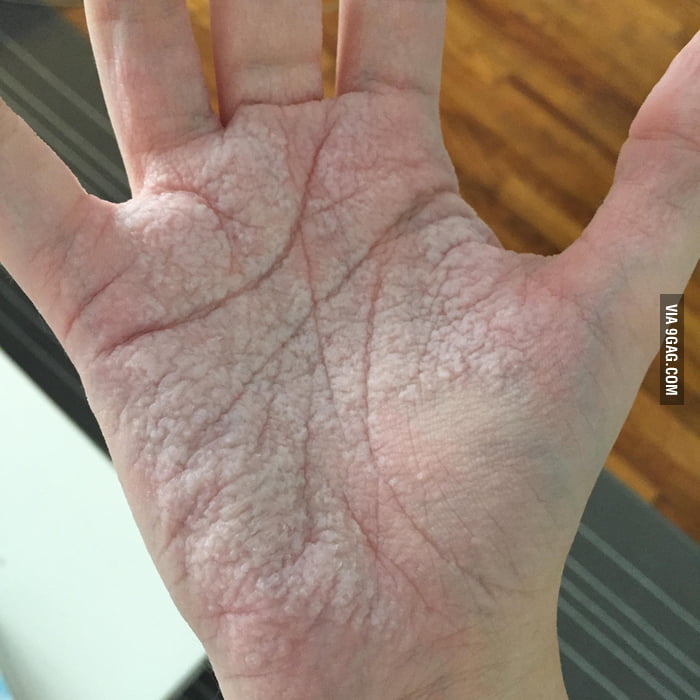It is eccrine gland disease.
Pathogenesis is poorly understood
Stratum corneum dysfunction and aberration in eccrine gland structure can be possible for the disease presentation.
Clinical features:
Patient complains of appearance of whitish translucent Papules over palms after immersion of hand in water.
Once the contact with water is removed it disappears in 10-20 minutes.
Sometimes it is accompanied by sensation of tingling and tightness of palm.
Excessive wrinkling of skin over palms develop on repeated exposures
Other sites:
Dorsal hands or fingers
Rarely sole is involved
Associations:
Cystic fibrosis
Family history (+) in some cases
Hyperhidrosis
Conditions should be distinguished from hereditary papulotranslucent acrokearatoderma.
Histopathology is helpful to confirm diagnosis
On histopathology orthokeratosis and dialated eccrine ducts are seen in aquagenic acrosyringeal kearatoderma while eccrine gland is normal in hereditary variant.
Treatment:
No standard treatment is available
Options:
1) Aluminum chloride hexahydrate 20% at night
2) Barrier emollients petroleum based
3) 12% ammonium lactate cream
4) Botulinum toxin injection
Biopsy should be performed immediately after immersion of hand in water.
This disease is rare but sometimes it may be under diagnosed.
The hand in bucket sign is very typical of this condition.
Multiple whitish Papules over palm after water exposure


No comments:
Post a Comment